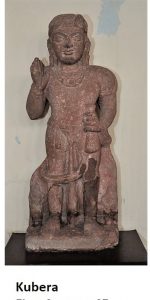 A mind is the complex of cognitive faculties that enables consciousness, thinking, reasoning, perception, and judgement — a characteristic of human beings, but which also may apply to other life forms. (Wikipedia)
A mind is the complex of cognitive faculties that enables consciousness, thinking, reasoning, perception, and judgement — a characteristic of human beings, but which also may apply to other life forms. (Wikipedia)
(in a human or other conscious being) the element, part, substance, or process that reasons, thinks, feels, wills, perceives, judges, etc.: the processes of the human mind. 2. Psychology. the totality of conscious and unconscious mental processes and activities. 3. intellect or understanding, as distinguished from the faculties of feeling and willing; intelligence. (Dictionary.com)
It is generally agreed that mind is that which enables a being to have subjective awareness and intentionality towards their environment, to perceive and respond to stimuli with some kind of agency, and to have a consciousness, including thinking and feeling. (Wikipedia)
———–
Advaita vedanta is frequently criticized by Western advaitins for its intellectual approach. Many things can be said about this but I would like to clarify here what Advaita Vedanta means by mind.
In the West quite a number of functions are subsumed under this one term ‘mind’. From the point of view of vedanta the above definitions are a bit of a mumbo jumbo. Two flaws in particular need to be pointed out. The first is to do with the use of the word ’consciousness’. Whereas Wikipedia says mind enables consciousness, vedanta states the opposite: consciousness enables mind. The other flaw is that there is no differentiation between all the various functions listed: ‘thinking, reasoning, perception, and judgement ‘.
I would like to take up this latter point here. Continue reading →


 [The world and everything in it are imaginary (mithya) ‘names and forms’! Therefore, tradition depicts Ishwara as a pauper because he does not possess any worldly wealth. However, he transcends the worldly objects and is said to be an embodiment of the Self. In contrast, Kubera possessed a lot of worldly treasures, a collection of mere names and forms, but lacked the real wealth of Self-knowledge. So, he sought guidance from Ishwara.]
[The world and everything in it are imaginary (mithya) ‘names and forms’! Therefore, tradition depicts Ishwara as a pauper because he does not possess any worldly wealth. However, he transcends the worldly objects and is said to be an embodiment of the Self. In contrast, Kubera possessed a lot of worldly treasures, a collection of mere names and forms, but lacked the real wealth of Self-knowledge. So, he sought guidance from Ishwara.]
